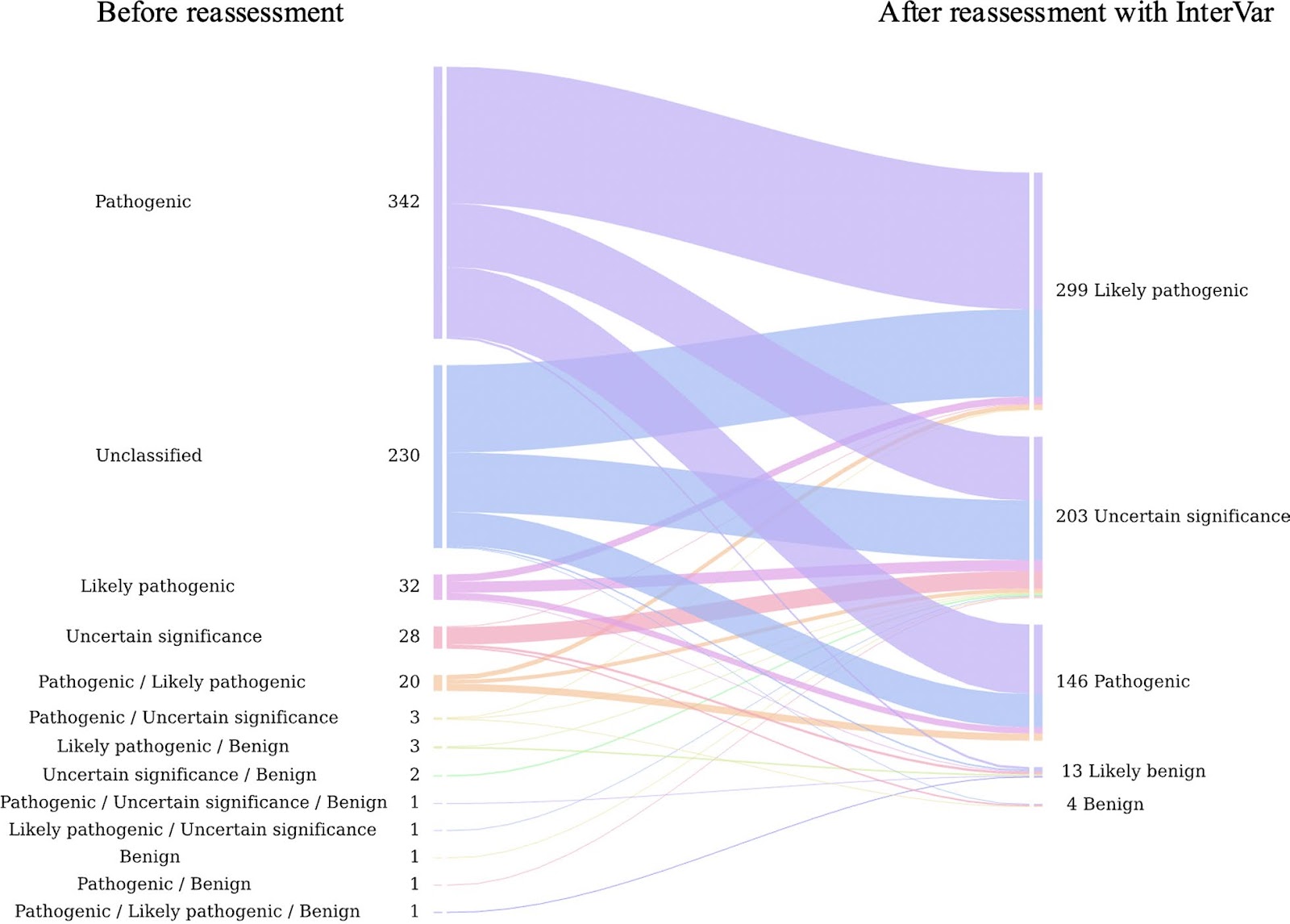HSE Researchers Determine Frequency of Genetic Mutations in People with Pulmonary Hypertension

For the first time in Russia, a team of scientists and clinicians has conducted a large-scale genetic study of patients with pulmonary arterial hypertension. The team, which included researchers from the International Laboratory of Bioinformatics at the HSE Faculty of Computer Science, analysed the genomes of over a hundred patients and found that approximately one in ten carried pathogenic mutations in the BMPR2 gene, which is responsible for vascular growth. Three of these mutations were described for the first time. The study has been published in Respiratory Research.
Idiopathic pulmonary arterial hypertension (IPAH) is a rare and poorly understood condition characterised by the gradual narrowing and loss of elasticity of the blood vessels in the lungs. This condition is most commonly associated with mutations in the BMPR2 gene, which regulates cell growth in the walls of blood vessels. Mutations in this gene prevent the receptor it encodes from suppressing excessive cell proliferation, leading to thickening of the pulmonary artery walls, narrowing of the vascular lumen, and reduced blood flow. The heart—particularly the right ventricle, which pumps blood to the lungs—struggles to function properly. As a result, it becomes overworked, and less oxygen enters the bloodstream.
Current treatments for IPAH help slow disease progression and alleviate symptoms but do not address the underlying cause. However, scientists are developing new gene-editing techniques that could potentially target and cure the underlying cause of the disease in the future. It is therefore important for clinicians to understand the prevalence of these mutations and to be able to identify them accurately.
In various countries, mutations in BMPR2 are found in 8% to 50% of patients with IPAH; however, their prevalence in Russia has not yet been studied. The first such study was conducted by researchers from HSE University, Lomonosov Moscow State University, and City Clinical Hospital No. 29 named after N. E. Bauman. As part of the 100,000 Russian Genomes Project, researchers analysed the genetic profiles of 105 IPAH patients—mostly residents of Moscow—who were treated at a specialised care centre over the past ten years. Genetic testing was conducted using whole-genome sequencing, a method that determines the complete sequence of human DNA.

Dmitry Zateyschikov
'Our study is unique for several reasons. First, IPAH is a very rare condition, and it took us nearly ten years to gather a sufficient number of patients. Second, the study included nearly all IPAH patients living in Moscow. Third, whole-genome sequencing offers new opportunities to explore disease mechanisms. Most importantly, we assembled a multidisciplinary team capable of solving problems at the intersection of medicine, bioinformatics, and genetics,' comments Prof. Dmitry Zateyschikov, Head of the Department of Therapy, Cardiology and Functional Diagnostics with a Course of Nephrology at the Central State Medical Academy of the RF Presidential Administration and Head of the Vascular Centre at City Clinical Hospital No.29 named after N.E. Bauman.
The study found that 10.5% of the patients carried pathogenic or likely pathogenic variants of the BMPR2 gene. Three variants were discovered and reported for the first time: one causing the deletion of an exon (a large segment of the gene), another inducing a frameshift mutation that results in a faulty protein, and a third disrupting the RNA splicing process. Additionally, several patients were found to carry pathogenic variants in the ATP13A3, AQP1, and TBX4 genes.
The scientists conducted a large-scale meta-analysis of mutation data by compiling information from 24 studies worldwide. They reassessed the reported frequency of pathogenic variants using uniform criteria and standardised the results with the InterVar tool, which is based on guidelines from the American College of Medical Genetics and Genomics. All 665 genetic variants were classified into five standard categories—pathogenic, likely pathogenic, variants of uncertain significance, likely benign, and benign—following the international classification system. This standardisation enables clinicians worldwide to use a common language when interpreting results.
The reclassification of 665 mutations increased the number of pathogenic and likely pathogenic variants from 394 (59%) to 445 (67%). The meta-analysis found the overall global average frequency of pathogenic BMPR2 variants to be approximately 17.75%, which is comparable to the frequency observed in the Russian population. Thus, international guidelines for diagnosis and treatment can be applied in Russian medical practice, and the findings of Russian researchers can be used worldwide.


Maria Poptsova
'IPAH is not only a rare condition but also a genetically complex one. Even silent mutations that do not cause the disease on their own can contribute to its development when combined with other genetic and environmental factors. This underscores the importance of regularly reassessing genetic information, as the classification of even known mutations can change as new data emerges,' explains Maria Poptsova, Head of the International Laboratory of Bioinformatics at the HSE FCS and co-author of the paper.
The study was conducted with support from HSE University's Basic Research Programme within the framework of the Centres of Excellence project and the Cardiogenetics Research Group at the HSE Faculty of Computer Science.
See also:
Scientists Test Asymmetry Between Matter and Antimatter
An international team, including scientists from HSE University, has collected and analysed data from dozens of experiments on charm mixing—the process in which an unstable charm meson oscillates between its particle and antiparticle states. These oscillations were observed only four times per thousand decays, fully consistent with the predictions of the Standard Model. This indicates that no signs of new physics have yet been detected in these processes, and if unknown particles do exist, they are likely too heavy to be observed with current equipment. The paper has been published in Physical Review D.
HSE Scientists Reveal What Drives Public Trust in Science
Researchers at HSE ISSEK have analysed the level of trust in scientific knowledge in Russian society and the factors shaping attitudes and perceptions. It was found that trust in science depends more on everyday experience, social expectations, and the perceived promises of science than on objective knowledge. The article has been published in Universe of Russia.
Institute for Robotics Systems Established at HSE University
As decided by the HSE University Academic Council, a new Institute for Robotics Systems will be established at HSE, and with a strong fundamental base. It will cooperate with relevant departments across the university and engage students and doctoral candidates in research and development (R&D). First Vice Rector of HSE University and Director of the Institute for Statistical Studies and Economics of Knowledge, Leonid Gokhberg, discussed the expected practical results and the framework for cooperation with an industrial partner.
IDLab: Fascinating Research, Tough Deadlines, and Academic Drive
The International Laboratory of Intangible-driven Economy (IDLab) was established at the HSE campus in Perm 11 years ago. Its expertise in data processing and analysis allows researchers to combine fundamental studies with applied projects, including the development of risk and cybersecurity models for Sber. The head of the laboratory, Professor Petr Parshakov, and Senior Research Fellow Professor Mariya Molodchik spoke to the HSE News Service about IDLab’s work.
HSE Tops Ranking of Universities Participating in Priority 2030 Programme
The Russian Ministry of Science and Higher Education has published an updated list of participants in the Priority 2030 programme. A total of 106 universities will receive support this year. HSE University was included in the first group and topped the ranking.
HSE Psycholinguists Launch Digital Tool to Spot Dyslexia in Children
Specialists from HSE University's Centre for Language and Brain have introduced LexiMetr, a new digital tool for diagnosing dyslexia in primary school students. This is the first standardised application in Russia that enables fast and reliable assessment of children’s reading skills to identify dyslexia or the risk of developing it. The application is available on the RuStore platform and runs on Android tablets.
HSE Scientists Optimise Training of Generative Flow Networks
Researchers at the HSE Faculty of Computer Science have optimised the training method for generative flow neural networks to handle unstructured tasks, which could make the search for new drugs more efficient. The results of their work were presented at ICLR 2025, one of the world’s leading conferences on machine learning. The paper is available at Arxiv.org.
Physicists Propose New Mechanism to Enhance Superconductivity with 'Quantum Glue'
A team of researchers, including scientists from HSE MIEM, has demonstrated that defects in a material can enhance, rather than hinder, superconductivity. This occurs through interaction between defective and cleaner regions, which creates a 'quantum glue'—a uniform component that binds distinct superconducting regions into a single network. Calculations confirm that this mechanism could aid in developing superconductors that operate at higher temperatures. The study has been published in Communications Physics.
Neural Network Trained to Predict Crises in Russian Stock Market
Economists from HSE University have developed a neural network model that can predict the onset of a short-term stock market crisis with over 83% accuracy, one day in advance. The model performs well even on complex, imbalanced data and incorporates not only economic indicators but also investor sentiment. The paper by Tamara Teplova, Maksim Fayzulin, and Aleksei Kurkin from the Centre for Financial Research and Data Analytics at the HSE Faculty of Economic Sciences has been published in Socio-Economic Planning Sciences.
Mistakes That Explain Everything: Scientists Discuss the Future of Psycholinguistics
Today, global linguistics is undergoing a ‘multilingual revolution.’ The era of English-language dominance in the cognitive sciences is drawing to a close as researchers increasingly turn their attention to the diversity of world languages. Moreover, multilingualism is shifting from an exotic phenomenon to the norm—a change that is transforming our understanding of human cognitive abilities. The future of experimental linguistics was the focus of a recent discussion at HSE University.


